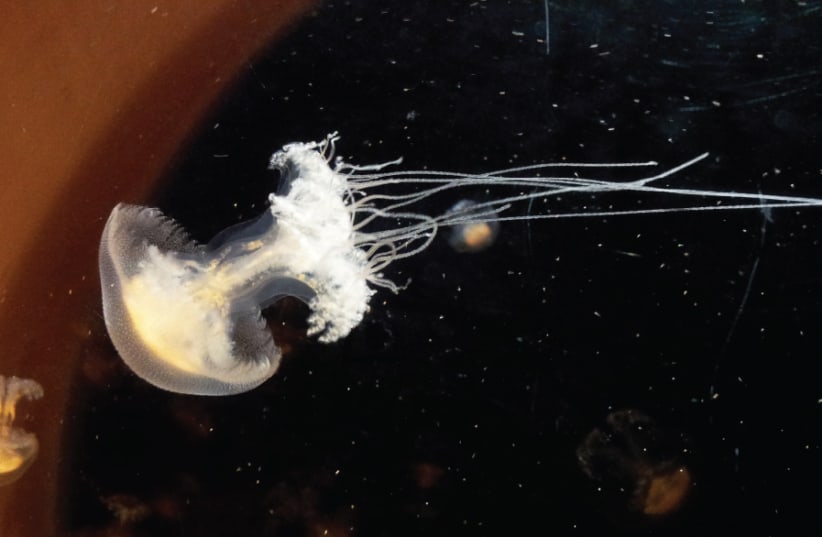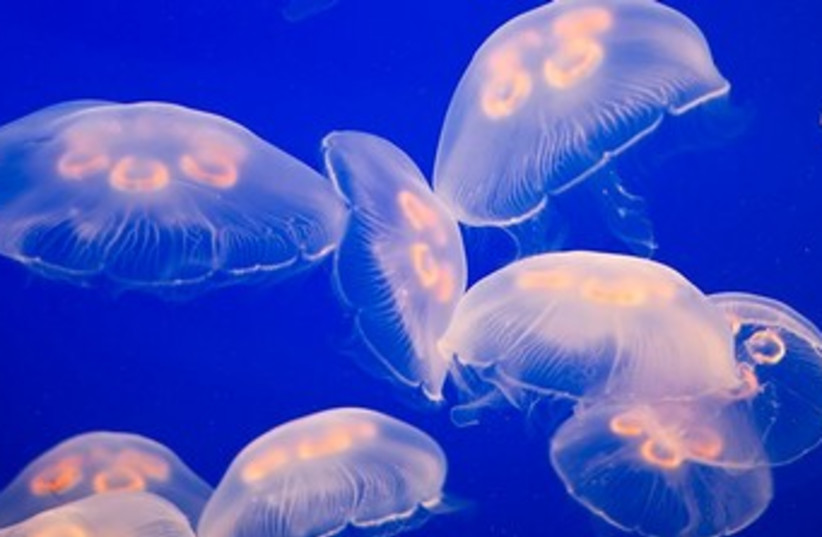They arrive as regularly as Summer Time, but the “migrating wire” (Rhopilema nomadica) jellyfish that reach Israel’s Mediterranean shores and beaches are not welcome by bathers. Where do these transparent, gelatinous, stinging creatures come from?
A new study conducted at the University of Haifa and published in the journal Frontiers in Marine Science under the title “Tracking Jellyfish Swarm Origins Using a Combined Oceanographic-Genetic-Citizen Science Approach,” has discovered for the first time that the origin of our swarms of migrating, free-swimming marine animals are the beaches opposite the eastern side of the Nile Delta in Egypt – but not the river itself.
Dr. Dor Adelist, the study's co-author and a marine macro-ecologist whose research tackles some of the most challenging fields in human-ocean interactions – fisheries and invasive species – admits that jellyfish are his ongoing “hobby and obsession.”
“The complex life cycle of jellyfish makes tracking their origins a challenging task. Using oceanographic models, genetic testing and 'citizen science' observations, we have found that the Nile estuary bottom – an area rich in fertilizers – is inhabited by tiny polyps from which jellyfish form," he said. "Swimming north, the jellyfish reach the shores of our country."
Although they have been on Earth for over 500 million years, scientists still do not know enough about jellyfish, how they reproduce or their migration routes. Jellyfish have a complex life cycle that begins with sex in the water column and the formation of a cylindrical or egg-shaped fertilized planula that has numerous cilia (tiny hairlike projections) used for locomotion and that swims and settles on the sea floor. These eggs undergo a process of metamorphosis on the bottom and become polyps.
“The planulas, which are less than a centimeter in size, grow between four to 10 discs that are released under the conditions that suit them. After their release, they become mature jellyfish. The tiny polyps may reproduce asexually as well by germination and cloning on the seabed. When the water usually warms up in April, the polyps release the discs, which is why we see the dense swarms on the shores of the country in early summer when they are already large,” Adelist explained.
“The tiny size of the polyps, coupled with the complex life cycle, makes it very difficult to identify those polyp colonies, while at least with regard to jellyfish found in the Mediterranean, researchers do not know exactly where their mother colonies are located. These are very small and sit on the bottom of the sea, which makes it very difficult to identify them,” the researchers said.
IN THE current study, Adelist and co-authors Prof. Dror Angel and doctoral student Hila Dror from the department of marine civilizations at the University of Haifa, together with a team of researchers from Norway, sought to find the source of life of the polyps from which migratory jellyfish of the Mediterranean are formed.
The researchers sought to perform “backward engineering,” that is, to determine when the adult jellyfish reach the shores of Israel and then go backwards with the currents to find the location from which they came. The first step was to identify exactly when the first jellyfish reached the shores of Israel, and they did this with data from the “Meduzot Ba’am” (www.meduzot.co.il) website established by Adelist and Angel about a decade ago, in which citizens report the presence of jellyfish in real time. The researchers used data from reports in June and July of 2017 and 2018.
In one of them, the swarm was long and dense; in the other, it was much thinner and short. “While we know the general direction of the currents, the currents can change, stop and even flip from time to time,” they said. What they used was a three-dimensional oceanographic model with a resolution of 0.8 km called SINMOD, developed by the Norwegian SINTEF independent research organization. The model simulates the release of virtual particles from various points in space and their passive drift in the sea currents.
The area of the Nile estuary is not only rich in fertilizers that serve as a food supply, but the water temperature reaches 20°C around the month of April. The study confirms findings from previous studies that all migrating wire jellyfish come from a single population that has no genetic diversity, which may characterize other populations in the eastern Mediterranean.
"Our jellyfish – [and those] of Egypt, of Turkey [and] of all the eastern Mediterranean – come from one large population of the same species from the same source.” the researchers said.
Jellyfish are a big challenge that needs to be addressed and not a problem that needs to be solved, they concluded, “as they have importance in the food chain in the Mediterranean. History shows that in the sea, a new species invading a new environment is never eradicated. Part of the challenge for our website is providing information about the prevention of burns" from jellyfish stings "and the recommended treatment for them.
"The jellyfish are part of nature,” the researchers concluded. "They should not be demonized – and they also deserve some love."

